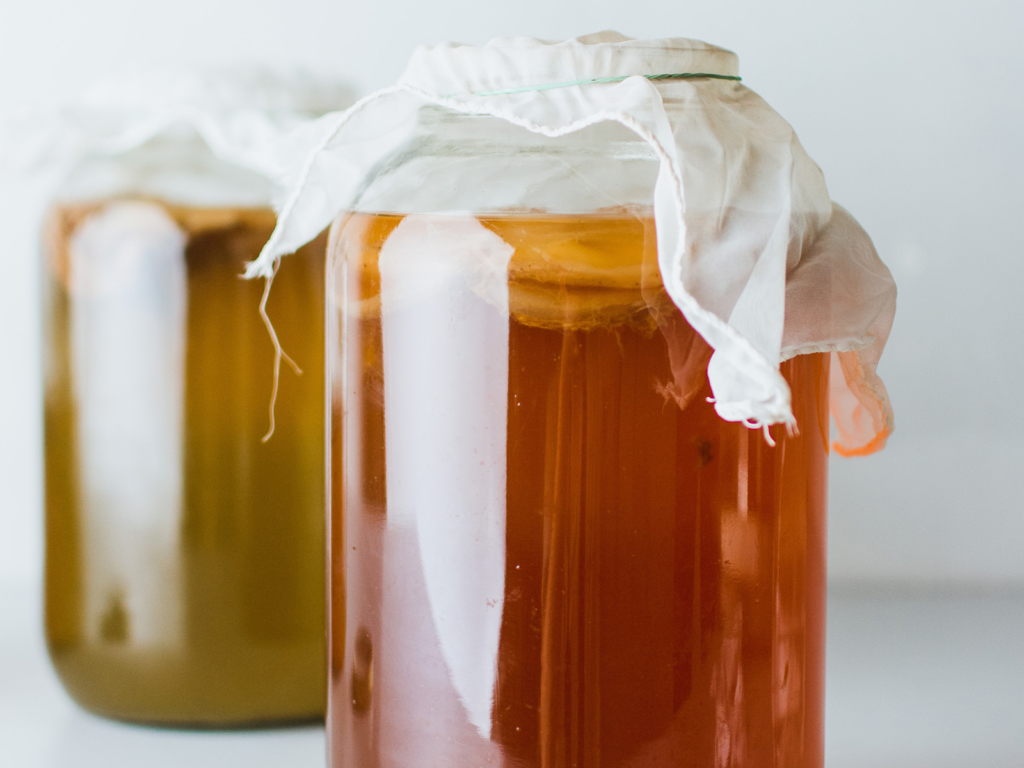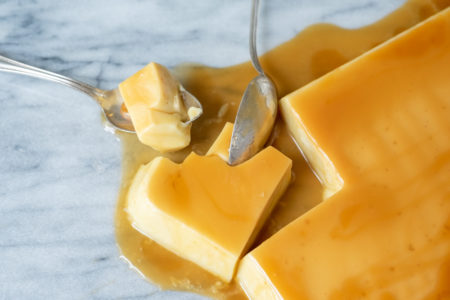Attempting to pin down the origin of this fermented beverage is no easy feat, but one sure thing is that kombucha has become a highly popular drink among the health conscious crowd and those seeking a fizzy flavored alternative to soda.
How is Kombucha Made?
To make kombucha, brewed tea and sugar are mixed and added to a container along with a SCOBY, which is an acronym for symbiotic culture of bacteria and yeast. Similar to a mother used to make vinegar, a SCOBY is a gelatinous like disc that eats the sugar and ferments the liquid, with the added bonus of also creating probiotics and gut healthy bacteria. Look for kombucha in health stores, gourmet grocers, and most chain grocery stores.
Flavor and Texture of Kombucha

These days, kombucha comes in all different flavors ranging from ginger to poblano pepper. However, you can always count on it to be tart and sour since the SCOBY eats most of the added sugar. As a result of the fermentation process, the tea mix becomes carbonated which makes for a beautifully bubbly beverage. Kombucha also naturally contains alcohol thanks to fermentation, however it’s a relatively small amount at only 0.5% ABV or less.
Storage and Usage of Kombucha
Keep your kombucha in the refrigerator for maximum freshness and drink before the printed expiration date. If brewing your own at home, be careful to follow instructions on fermentation time and location, making sure to keep your home brew out of sunlight and covered.
However, don’t sell yourself short by only drinking kombucha, give cooking with it a go. Use this flavored fizzy beverage as a cooking liquid for slow cooks like our Jerk Chicken Lettuce Wraps. Or try pouring some kombucha into a pan and reducing it for a delicious sauce over shrimp or scallops.
Feature Image: Tim-Oliver Metz on Unsplash



